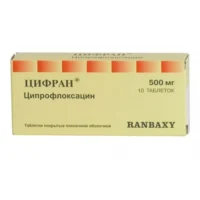Description
Sumamed (Azithromycin) Dispersible Tablets 500 mg
Ingredients
- Each dispersible tablet contains 500 mg of azithromycin.
Dosage
- The usual dosage for adults is one 500 mg dispersible tablet once daily for 3 days.
Indications
- Sumamed dispersible tablets are indicated for the treatment of bacterial infections sensitive to azithromycin.
Contraindications
- Do not use Sumamed if you are allergic to azithromycin or other macrolide antibiotics.
Directions
- Dissolve one tablet in water before taking. Take on an empty stomach at least 1 hour before or 2 hours after a meal.
Scientific Evidence
- Azithromycin, the active ingredient in Sumamed, has been extensively studied for its efficacy in treating bacterial infections. Research has shown its high effectiveness in treating respiratory tract infections.
Additional Information
- It is important to complete the full course of treatment with Sumamed as prescribed to ensure the infection is fully treated. Seek medical attention if you experience severe side effects or allergic reactions.
- Azithromycin works by inhibiting bacterial protein synthesis, preventing bacterial growth. It is effective against respiratory tract infections, skin infections, and sexually transmitted diseases.
- Clinical trials have demonstrated that Sumamed dispersible tablets are as effective as standard azithromycin tablets. The dispersible formulation is preferred by patients who have difficulty swallowing tablets.





